Staycation Nation: 20 reasons why you should holiday in Northumberland over Cornwall

While others look to Devon and Cornwall when dreaming of the seaside, I look to the opposite end of England. As a fully paid-up member of the North East Coastal Appreciation Society, I scratch my head and ask myself: who needs the South West when you can take in beaches that stretch to a vanishing point, magnificently battered castles and market towns and villages that have yet to prostrate themselves for the sake of the tourist shilling? Yes, a dip in the North Sea turns me an interesting shade of orange, but that’s a reasonable trade-off for not having to queue 30 minutes for a pasty.
Northumberland’s coastal drama begins 30 miles north of Newcastle where the A1068 peels off from the A1 and makes a dart for the coast. My first destination is usually the village of Warkworth, which is dominated by a ruined medieval castle that looms above the river Coquet. A short walk upriver leads to the Coquet; the perfect place to see wildlife in its element in spring. Here, sandpipers flap from one bank to the other, dippers feast on caddisflies, and dragonflies jerk like iridescent, remote-controlled helicopters.
Warkworth hermitage lies just a half-mile beyond. Carved out of local rock, it once attracted recluses in search of solitude beyond what Northumberland already had to offer. In the 14th century, it served as a private chapel for the first earl of Northumberland, who headed the powerful Percy family. The Percys, along with other wealthy Northumberland landowners, had a predilection for picking fights and standing their ground against invaders.
The borderland between Scotland and England may be tranquil now, but the castles of Northumberland once came in very handy. Historically it has been a riotous place, overrun by Border reivers – sheep rustlers and general ne’er-do-wells – as well as marauding armies heading north and south, Vikings, and various other opportunistic pillagers.
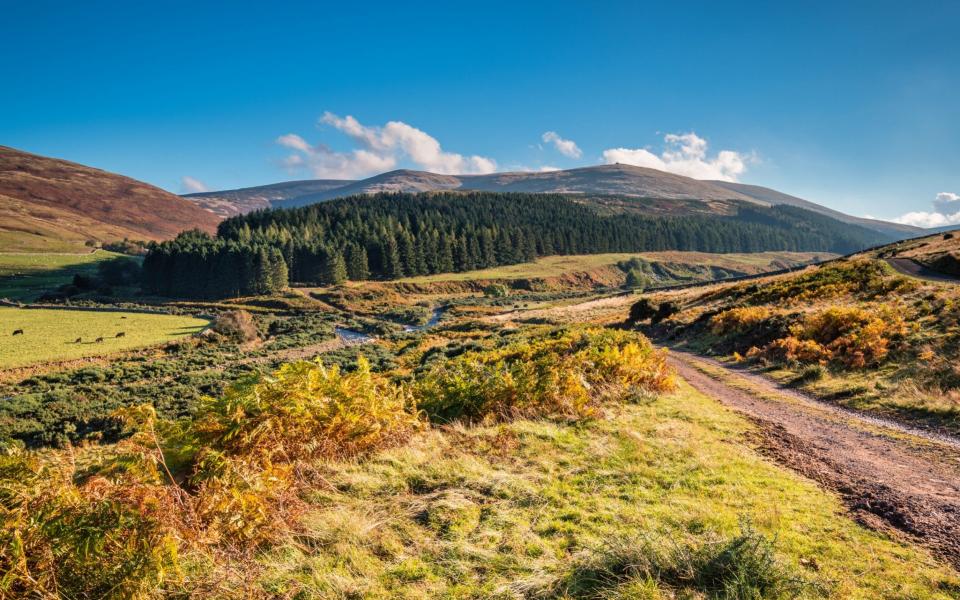
Headquarters for the present-day Percys is Alnwick Castle, set back from the market town of the same name. Alnwick has an authentic feel – not only does it have one of the UK’s best bookshops, Barter Books, housed inside the former railway station, and a country clothing store, but the butcher and delicatessens sell local food. This includes cheese from Doddington’s Dairy in Wooler, jams, coffee and even mead, all stamped with a distinctive yellow and red “Produced in Northumberland” logo.
The castle is the real deal too, and is worth exploring for reasons that go beyond its recent fame as a location for the Harry Potter films: crenellated battlements glower down at you and secret staircases entice the children. You can nose around some of the modern rooms where the spick-and-span furniture and half-read magazines give the impression that the current owners have just popped out to the corner shop.
Leaving Alnwick behind, the next stop north is the quayside village of Craster. A one-and-a-half-mile walk along the windswept, dramatic coast from the harbour sits the gloriously ruined pile that is Dunstanburgh castle. Dramatic rock formations are something of a speciality in this part of the county and the spiky basalt rocks that edge into the sea are blurred, indistinct versions of the same volcanic activity that formed the Giant’s Causeway.
The landscape is raw but beautiful. These prickly, rocky edges are softened by wildflowers that grow on the thickets of coconut-scented gorse and the lusty singing of warblers. The path swings inland, as though bowing in deference to the castle, whose turrets resemble a broken, battle-dented crown. Steep, north-facing cliffs provide perilous nesting sites to hundreds of seabirds.
Looking north, the gracious sweep of Embleton Bay frames the view, a half-crescent where the waves are ever-eager to curl over the shore. Just beyond the northern end of the bay, hidden from view, is the Ship Inn, which would enjoy a podium place in any competition for the best coastal walker’s pub.

The Holy Island of Lindisfarne is visible on the horizon, just beyond the most emphatic castle in Northumberland, Bamburgh. Perched on a lump of volcanic rock 150ft above the North Sea, it is certainly tough-looking. The flatness of the surrounding landscape makes it seem all the more oversized but it is strikingly aesthetic and easy on the eye, thanks to its sandstone walls, gateways and towers, punctuated harmoniously with medieval arrow slits.
A footpath leads away from the castle to horseshoe-shaped Budle Bay. Tucked away, hidden by dunes, sandbanks and quivering reed beds that line its peaty edges, Budle Bay is an utterly enchanting place. The tide here is fast, draining the bay as if the water were gurgling down a plughole.
The tide moves equally swiftly further up the coast, where it rushes across the sandbanks and mudflats to close the door on Lindisfarne, leaving Holy Island cut off for some five hours at a time from the mainland. If you’re on Lindisfarne when the tides are in, it is not hard to imagine how the landscape exerted a pull on the pilgrim monks of the seventh century, led by Aidan, fresh from that other Holy Island, Iona, off Mull.
The ruined priory is a hushed, intensely atmospheric affair. Dating back to the 12th century, it was founded by the monks of Durham Cathedral. The intriguing sculpture in the grounds is of St Cuthbert, who spread the Christian faith across northern Britain.
Pass Lindisfarne’s harbour, where upturned fishing boats have long been converted into storehouses, and make for the island castle. Impressive, in a curiously Transylvanian way, it sits coiled and perched on a crag above a sweep of grass as though it has wrapped itself in a cloak.

The castle was built at the behest of Henry VIII, but was subjected to a 20th-century makeover at the hands of architect Edward Lutyens. From the front door of the castle you can survey the coast, all the way south to Craster. Journey’s end, Berwick-upon-Tweed, is clearly visible too, 12 miles distant as the oystercatcher flies.
Best known perhaps as the English town whose football team plays away league games in Scotland, Berwick is the only completely walled town in Britain, and should be better regarded as a mini York or Chester. Two attractive road bridges stamp their way across the River Tweed while architectural purists will purr at the Georgian survivals along Quay Walls, dominated by the restored custom house.
The town captivated L S Lowry, whose paintings of Berwick form a relatively unheralded part of his oeuvre. A Lowry trail around town compares today’s little-changed view with the artist’s impressions of buildings and the coastal hinterland.
Clamber up the gentle rise known as Meg’s Mount for a view over Berwick and south right down the coast. Berwick changed hands 13 times between the English and the Scots before finally becoming English in 1482.
Over your shoulder, the hill behind marks the border with Scotland. Northumberland was formed from volcanic lumps and bumps and a good number of these are visible from here, some of them studded with brooding, grumpy-looking castles. Not only is Northumberland a border county but it looks and feels like one too. A journey along its coast provides the curious sensation that you are either looking back on yourself and the past, or north to where you might be next and the future.
20 reasons to holiday in Northumberland
1. Spot seals at sea
Most people take a boat trip to the tiny RSPB wildlife reserve of Coquet Island, crowned by its shimmering-white lighthouse a mile offshore from the fishing village of Amble. Kayaking, however, is more fun; it allows you to play hide-and-seek with the island’s colony of grey seals. Or, rather, they play hide-and-seek with you, bobbing up and nuzzling the boat, then sinking down and popping up by another in your group.
No experience is needed for paddling the two-person kayaks as they are very stable, and perfectly possible to do in shorts and T-shirts – yes, even in the North Sea – in the summer. April to July is the season for watching puffins – the comical orange-beaked-and-webbed birds who are actually allowed here for their summer holidays from South Africa. Keen bird-watchers will also be thrilled to see the rare roseate tern at their only UK breeding spot. Three hours’ kayaking from £45pp; adventurenorthumberland.co.uk
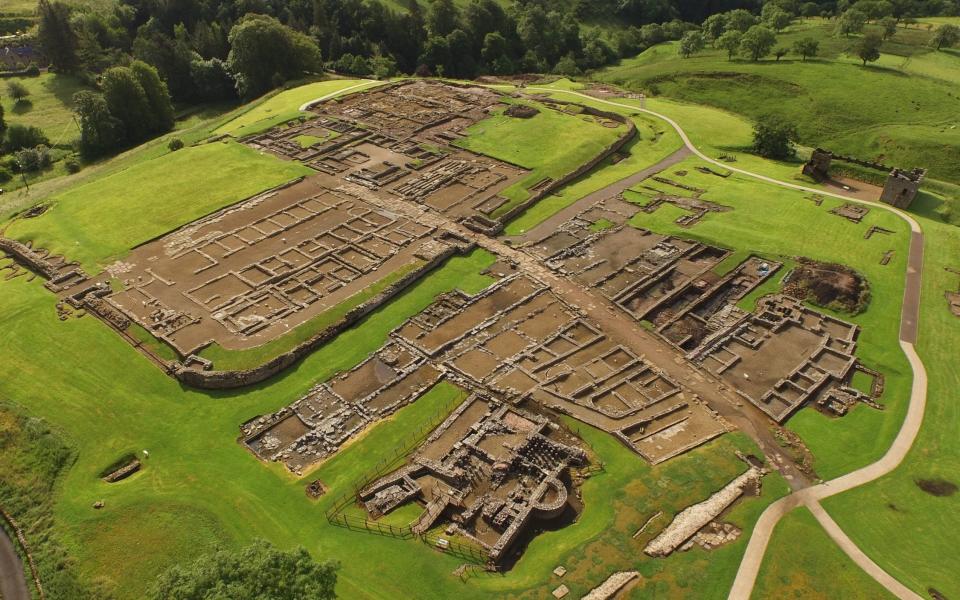
2. Romp with Romans
How high was Hadrian’s Wall? Bigger than you thought. At Vindolanda – a vast Roman frontier site that pre-dates the 2nd-century wall, and now an open-air museum – a replica of the emperor’s extraordinary feat of engineering is available to clamber on; some 15ft high, incidentally.
Watch archaeologists at work on the village-sized site – which includes sophisticated buildings such as houses with heated bathrooms – as they dig and scrape to unearth new treasures, revealing gems like the Christian chalice that was discovered recently.
The indoor museum has terrific displays, including the Vindolanda tablets – extraordinary examples of letters and documents handwritten on slivers of wood. But for those inevitable wet days, the sister Roman Army Museum will keep fidgety kids happy with its 3D film, treasure trails and dressing-up box. vindolanda.com
3. Bake bread
For one-upmanship in the competitive field of (pandemic) bread-making, head to the pin-neat estate village of Ford. At the 18th- century water-powered Heatherslaw Mill, don a floury smock and help the miller grind the flour. Machinery clanks, bags are hoisted, trapdoors open and shut, and tips are given on kneading dough. Ford, together with its sister village, Etal, is a charming version of an adventure playground with, among other things, two castles, a steam-powered light railway, remains of a 17th-century colliery, a micro-brewery that supplies the postcard-perfect thatched Black Bull pub, and the extraordinary Lady Waterford Hall. Built as a Victorian school, the hall showcases a cycle of Pre-Raphaelite murals that Louisa Anne, Marchioness of Waterford (who inherited Ford estate), created over 21 years. An underrated artist, her work was owned by Queen Victoria, and is still in the Royal collection. ford-and-etal.co.uk
4. Take tea
Pick any time of year, and something will be eye-catching at Howick Hall gardens. Snowdrops in February followed by daffodils; rhododendrons in the Silverwood from April; a meadow of scattered single-coloured tulips in May; salvias and aconites in the bog garden in high summer, before glowing colours in the 65-acre arboretum in the autumn. Romantic and rambling, it’s easy to lose other visitors as you disappear down a twisty path that might lead to a little wooden gate and a magical glade.

Tea and cake in the Earl Grey Tea House is de rigueur; the Hall is the home of the Grey family (now through the female line), whose most famous ancestor is the Victorian Prime Minister, the second Earl Grey of Reform Bill fame. He’s arguably more famous for the tea blended in his honour by a visiting Chinese mandarin and designed to suit the local water. Entry £8.80; howickhallgardens.com
5. A walk with heavenly rewards
The 84-mile-long Hadrian’s Wall path (nationaltrail.co.uk) is a serious walk alongside the route of the Roman emperor’s eponymous defensive structure – with detours, should you wish to explore Roman sites such as Housesteads and Chesters. To ease yourself in, book dinner on your second night (if walking in the east-to-west direction) at Hjem, in the prosaically named village of Wall, a mile south.
The restaurant, which means “home” in Swedish and Northumbrian, and is pronounced as though clearing your throat, gained a Michelin star this year, less than two years after opening – the first for Northumberland. Run by Swedish-born chef Alex Nietosvuori and Northumbrian-born partner Ally Thompson, it’s an oasis of Scandi-cool. Alex’s intensely flavoured but un-faddy dishes champion local produce (some foraged), such as barbecued oyster mushrooms with kohlrabi and frozen pine needles. As it’s part of the Hadrian Hotel (doubles rooms from £120; hadrianhotel.co.uk), you can totter up to bed, too. Tasting menu from £85pp; restauranthjem.co.uk
6. Head to hip Hexham
The sturdy market town of Hexham can often be overshadowed by neighbouring Corbridge with its chi-chi shops and tea rooms. But it may be time for a redress.

Hexham Abbey – modest but all the more friendly for it – dates back to the 12th and 13th centuries, with highlights including medieval wooden panel paintings (the Dance of Death is especially gruesome) and an Anglo-Saxon crypt. After a stroll in the quiet park surrounding the abbey, explore the town’s independent shops: children’s toys at Mr Wolf; classy pens and stationery at Penfax; New-Age crystals and clothing at Gaia; or book a consultation at Cogito Books. Afterwards, take a walk from the 18th-century stone-arched bridge, following the River Tyne upstream for a couple of miles to the point where the North Tyne meets the South Tyne in a rushing bubble of water, like old friends meeting after a year of lockdown.
7. Be bowled over by Bamburgh
There’s no avoiding Bamburgh Castle, which seems to fill the sky as it rises some 150ft on its volcanic outcrop. Built in the 11th and 12th centuries, it became an important fortress against marauding Scots, and was later bought by Victorian industrialist and inventor Lord William Armstrong, whose family still live here. Even if you’ve no interest in state rooms, armour, history, or fine paintings, the castle is worth a visit alone for the staggering views from the battlements.
From here, take a breezy beach walk to jolly Seahouses – a small, rather old-fashioned seaside resort – with some fine fish and chips (try Lewis’s or Neptune). Or browse Bamburgh’s small but well-executed Grace Darling Museum (rnli.org). Darling achieved worldwide fame in 1863 when she rowed, with her lighthouse-keeper father, from the nearby Farne Islands amid treacherous seas to rescue passengers from a crashed steamship. Adult ground tickets for Bamburgh Castle £6, child £3; bamburghcastle.com

8. Smell the roses
You have just missed the heavenly cherry blossom at Alnwick Garden, which floats like hundreds of snowy-white chiffon scarves across a grassy slope– make a note for next year – but you’re now in time to swoon at the heady scents in the rose garden. Some 3,000 roses, from around 200 different species, fill the air like an outdoor perfume factory. The garden, inspired by the Duchess of Northumberland (who lives next door at Alnwick Castle with her husband), is a bold, contemporary affair, as much playground as plantsman’s delight.
Splash around the water sculptures, get lost in the bamboo labyrinth, and marvel at the towering delphiniums in the ornamental garden. And do keep your hands in your pockets in the Poison Garden, where every plant is a killer. Adult £14.30, child £5.50; alnwickgarden.com
9. Wander England’s most northerly town
Salford-raised artist LS Lowry was drawn to the tough individualism of Berwick-upon-Tweed – a border town fought over between England and Scotland 13 times before eventually becoming England’s most northerly town in 1482 – and chose it as his holiday resort. Follow the Lowry Trail around town, which includes a walk on the gloriously intact Elizabethan Walls.
Another quirk is the small Burrell collection in the Berwick Museum and Art Gallery (adult £5; museumsnorthumberland.org.uk). The wealthy Glaswegian shipping magnate and art collector, Sir William Burrell, lived outside the town in Hutton Castle, and in the 1930s, donated art to the town – before the better-known collection in Glasgow was established. Glasgow, allegedly, is still jealous that works by Degas and Boudin are still held here.

10. Follow in the footsteps of a saint
Follow the path of 7th-century St Cuthbert by taking the ancient Pilgrim’s Way, rather than the metalled causeway, across the tidal flats to Holy Island. Although marked by poles, it’s a more relaxing – though still wet – experience to join guide Patrick Norris on the three-mile walk.
The island, also known as Lindisfarne, is cut off twice each day by the sea (crossings are only possible at low tide), just as it was when St Cuthbert joined its Anglo-Saxon monastic community. He probably crossed the sand and mud in bare feet, just as you can (or in wellies, if you prefer); unless you go way off-route, the deepest you’ll get is your calves. It’s immensely peaceful – despite the nearby causeway, the only sound you’ll hear is that of birds or grey seals; the latter “singing” as they haul themselves out for a spot of sunbathing. And then there’s the sky, so vast it can be hard to work out where the ground ends and the sky begins. As Patrick says: “It’s like walking on clouds.” Five-hour walk £17.50; footstepsnorthumberland.co.uk
11. Expand your mind
If the weather’s damp – or even if it’s not – hie away to Barter Books in Alnwick. This legendary second-hand bookshop sprawls throughout the town’s former Victorian station with dizzying but well-ordered stacks that cover every conceivable sub-genre. Pigeon-fancying? Vernacular architecture? You’ll find it here, and can flick through the pages on a sofa or in the fire-warmed station buffet.
But don’t ignore the town’s other shops, which are of sturdily independent stock long-disappeared from many other high streets. Family-run Jobsons will kit you out in the full country gear – and your horse, too. Bell & Sons menswear has a fine line in brogues and hip flasks, while hardware store House and Home is a mini-emporium of household practicalities, from spatulas and fire-guards to dressing-tables and garden rakes. barterbooks.co.uk
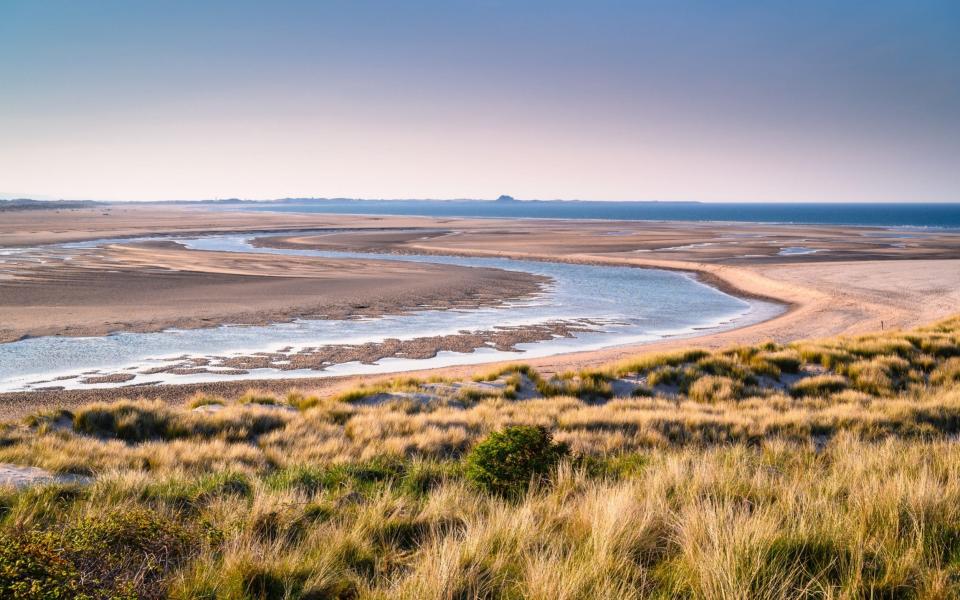
12. Be a busy bee
Paying no attention to borders, the bees at Chain Bridge Honey Farm are happy to collect pollen from either side of the Scottish-English boundary, which sits barely 300 yards away. The farm at Horncliffe has over 1,500 hives spread over the surrounding fields, meadows and moorland, with the busy bees producing a remarkable range of products, from moisturisers and lip balms to candles and furniture polish – as well, of course, as honeys, mustards and honey-combs. Buy these at the spick-and-span farm with its informative visitors’ centre, where the glass-sided observation hive fascinates with bees bringing in pollen. Pick up ideas for a bee-friendly garden before taking tea and cake in the re-purposed double-decker bus. To stand with one foot in England and one in Scotland, walk five minutes down the road to the 1820 Union Bridge. chainbridgehoney.com
13. Look to the skies
The nights may be getting shorter, but star-gazing is still possible – just a little later and a shade or two lighter in the evening. Kielder Forest, close to the Scottish Border, surrounds Kielder Water, Europe’s largest man-made lake. It sits in one of Europe’s largest Dark Sky Parks. Its observatory, a futuristic wooden-clad building set high on Black Fell, runs a year-round programme of events.
These can include a romp through the origins of the universe, the latest news on exoplanets (planets outside our solar system where life may be possible), the extraordinary northern lights and, on nights around the full moon, a study of the moon’s craters from cosy chairs on the decking.

Everyone gets a chance to look at distant planets, star clusters and nebulae through gigantic large-aperture telescopes. On summer nights, the ethereal noctilucent – or night-shining – clouds can often be seen. During the day, explore the area on one of its trails and look out for striking art installations such as the rotating Janus Chairs, the steel-mirrored Belvedere shelter and James Turrell’s contemplative igloo-shaped Skyspace. kielderobservatory.org
14. Smoke me a kipper
Depending on wind direction, you may smell L Robson & Sons Victorian smokehouses (kipper.co.uk) before you reach Craster’s sturdy little harbour. Producing kippers (and smoked salmon) in the traditional way, over whitewood shavings and oak sawdust, they are the only remnants of an industry that once saw 33 herring boats land fish here. You can still pick up your breakfast kippers (Norwegian herring) and other fishy delights at their shop.
Then it’s a windy romp to medieval Dunstanburgh Castle (adult £6.50, child £3.90; english-heritage.org.uk) whose skeletal remains teeter on the headland a mile and a half to the north. Built by England’s wealthiest nobleman, Thomas, Earl of Lancaster, it was an impressive affair, although Lancaster came to a sticky end for rebelling against Edward II (never a good idea). Certainly, its inhospitable location helped with later battles against the Scots. Fortunately, The Jolly Fisherman pub is open to all and will warm you up with crab soup and other fish dishes.
15. Frolic with goats
“One way to detect where they are is by their smell,” says Cain Scrimgeour. “It’s particularly pungent when you are downwind of them.” He’s talking goats; the wild goats of the Cheviot Hills. Now mainly found in College Valley or Coquetdale, they are believed to be the most primitive goat-herd in the UK, and look like a shaggier version of the domestic variety. Cain leads small groups into remote College Valley in the far north of Northumberland, and then up on to either Easter Tor or Wester Tor. Neither is huge (1437ft/438m and 1700ft/518m), but the views into Scotland and to the coast are magical.

Once goats have been spotted – the males in bachelor groups, the mothers with their kids (the latter often leaping about) – it’s a question of stealthy stalking to get closer. Excitement over, Cain’s co-leader and experienced chef, Chris Reay, whips out his wood-fired stove and cooks up an al-fresco meal that far exceeds your average picnic: perhaps pan-fried monkfish with tomato, chilli and ginger sauce, or Northumbrian lamb in tomato and mint with spiced cous cous, and treacle and orange tart to finish. Goats & Gourmet mini expedition from £80; wildintrigue.co.uk
16. Stroll on the sand
The best thing about Northumberland’s beaches is that there are a lot of them; the not-so-good thing is that they can be breezy. If you’re planning on, er, sun-bathing, then wind-breaks are advisable. Otherwise, these beaches are a sheer joy for walking, kite-surfing, wind-surfing, rounders, bird-watching, standing-and-staring, or just grinning at the sheer expanse of sand devoid of crowds.
Dune-backed Druridge Bay, in the south, is some five and a half miles long; the only one with a visitor centre. Warkworth segues into Alnmouth, the latter’s pancake-flat sands split by the estuary of the River Aln. Then there is the perfect tiny curve of Low Newton, with its nature reserve and micro-brewery pub, the Ship Inn, and neighbouring family-friendly Beadnell. The sands below Bamburgh Castle with their soft-pink glow are especially photogenic when a breeze whips the grains into gossamer-light eddies.
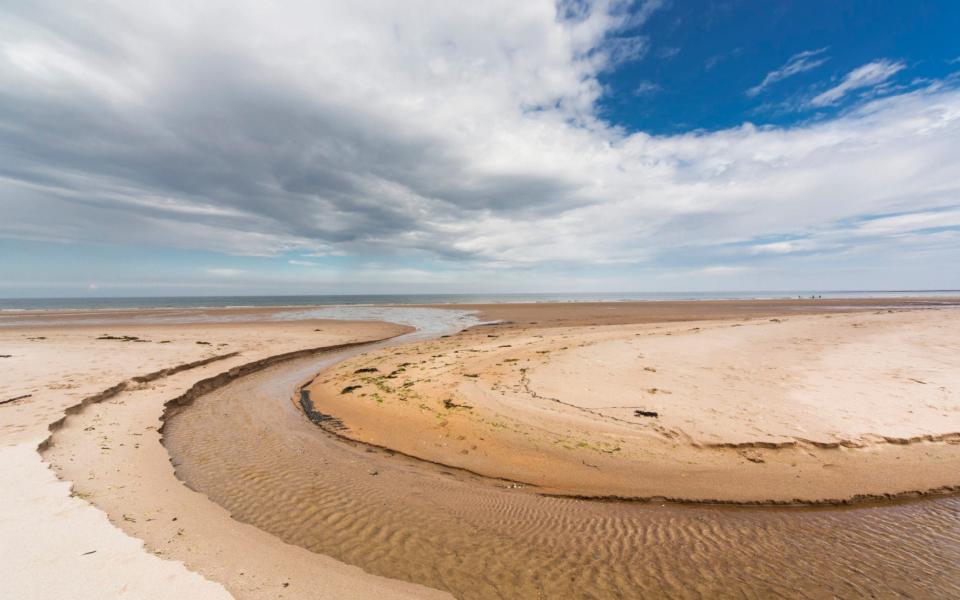
Less easy to reach, but all the better for it, are the wilder stretches of Ross and Goswick. With luck, your only company here will be terns, ringed plovers, oystercatchers or tiny sanderlings comically skittering in gossipy groups.
17. Pay a visit to a Holy Island
Lindisfarne Castle, rising on its rocky outcrop, saw little action after it was built as a 16th-century fort to guard the coast; it really came into its own when Edwin Lutyens converted it into a comfortable Edwardian home for his pal, Country Life editor Edward Hudson. Tucked around the back, and often overlooked, is a small but perfectly formed Gertrude Jekyll-designed walled garden (£9; nationaltrust.org.uk) with a planting scheme that zings with colour in the summer.
From the castle, take the path away from the village, past the lime kilns and around the lough to the north shore, where orchids can be found in the dunes. Be sure to see the impressive yet gaunt ruins of the Norman Priory. For an atmospheric experience, slip inside the next-door church, close your eyes and listen to the waves rolling against the shore. Then sharpen your other senses at Pilgrims Coffee House, which serves ethically sourced coffee from the island’s micro-roastery, both tucked in a walled garden. lindisfarne.org.uk
18. Discover a place where art meets adventure
It would be insulting to call Cragside, the country estate of Sir William Armstrong, a theme park. But it certainly offers family-sized entertainment – and in May and June, the rhododendrons are spectacular. The colossal Arts and Crafts house (the world’s first to be lit by hydro-electricity) dazzles with its Gillow-furnished library, Turkish bath, Japanese porcelain and opulent drawing room with vast marble inglenook (currently under restoration). Armstrong’s gadgets include hydraulically-operated lifts and intercom telephones.
Outdoors, more than 1,000 acres are criss-crossed with 40 miles of footpaths, leading between lakes, a tumbling cascade, formal gardens, and a pinetum – the latter designed to recreate a North American landscape. There is also a labyrinth and adventure playground for the young (or energetic). Almost everywhere, you will find lovely Armstrong detail. In the glasshouses, he ensured that small hatches were incorporated in the roof panels to allow bees to come in and pollinate. Adult £8, child £4; nationaltrust.org.uk
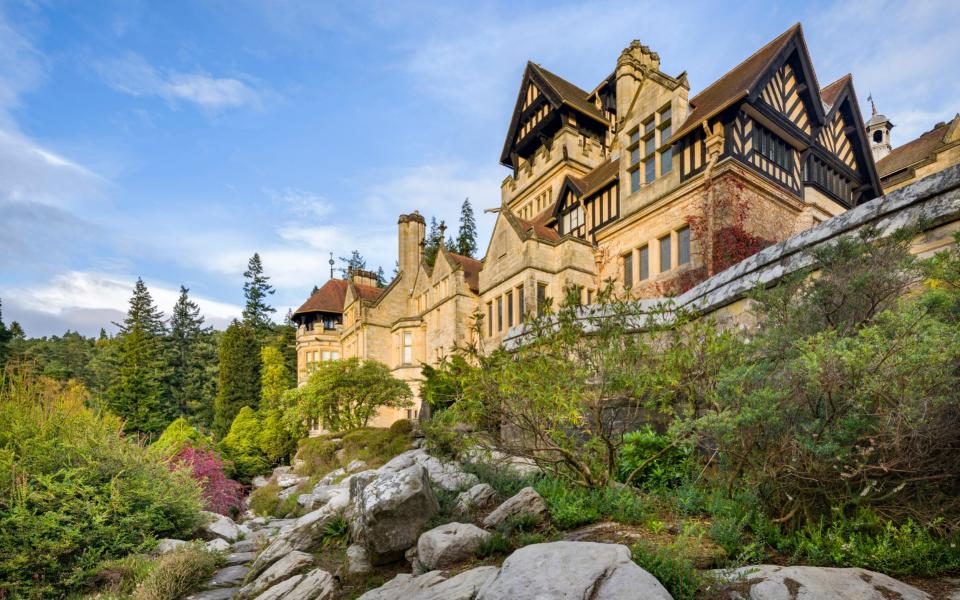
19. Sing for your supper
If you go down to the woods today with professional forager Linus Morton, you’re sure of a big surprise. Morton will teach you how to see ordinary leaves, grasses and flowers as a tasty meal. All you need is decent outdoor clothing, although a penknife is handy if you have one. Kielder Forest is a favourite hunting ground, and here you can gather Lady’s Smock, wild garlic and lime-tree leaves.
Come August, your haul can include ceps, chanterelles and bilberries. Back at base, Linus will whip out his stoves and rustle up lunch with a few things he’s prepared earlier, such as tofu and rice spring rolls flavoured with primroses and violets, dipped in a sweet cicely and elderberry sauce, or garlic gnudi with a wild sorrel sauce. Come away with your finds – and tips on preserving – and the knowledge that hogweed (not the nasty giant variety) tastes somewhere between celery and asparagus, and roasted lime-tree seeds are a useful chocolate substitute. A wild food foraging course costs from £65pp; northernwilds.co.uk
20 Soak up some sculpture
You’re never sure what might be round the corner, behind a wooden door, or up in the trees when visiting Cheeseburn Grange during its sculpture garden events. Over three summer weekends, the 10 acres of landscaped gardens, fields and woodland that surround the Georgian house are dotted with over 60 contemporary sculptures and installations. Some are by internationally renowned artists, such as David Mach, while others are by up-and-coming recent graduates.
This year, you can expect to see hundreds of red and grey ceramic squirrels leaping across lawns; a half-buried car crash being attacked by mischievous gnomes wielding implements, and an outbuilding covered in hundreds of stuffed tights. Wandering the beautiful grounds, which include a rose garden and Victorian walled garden, don’t be surprised if a yew tree suddenly bursts into organ music. Open May 22-23 & 29-31, June 5-6; entry from £5; cheeseburn.com


